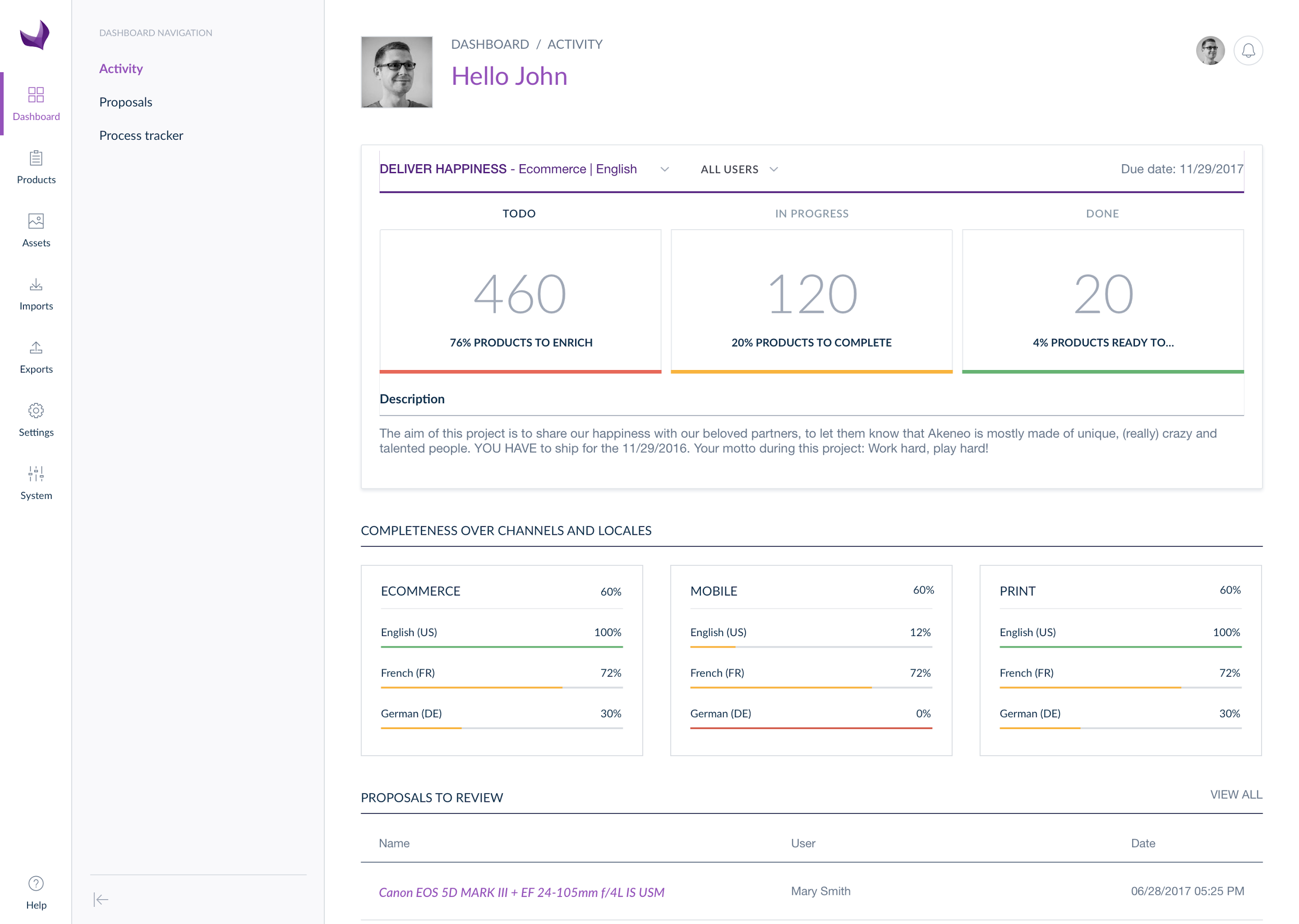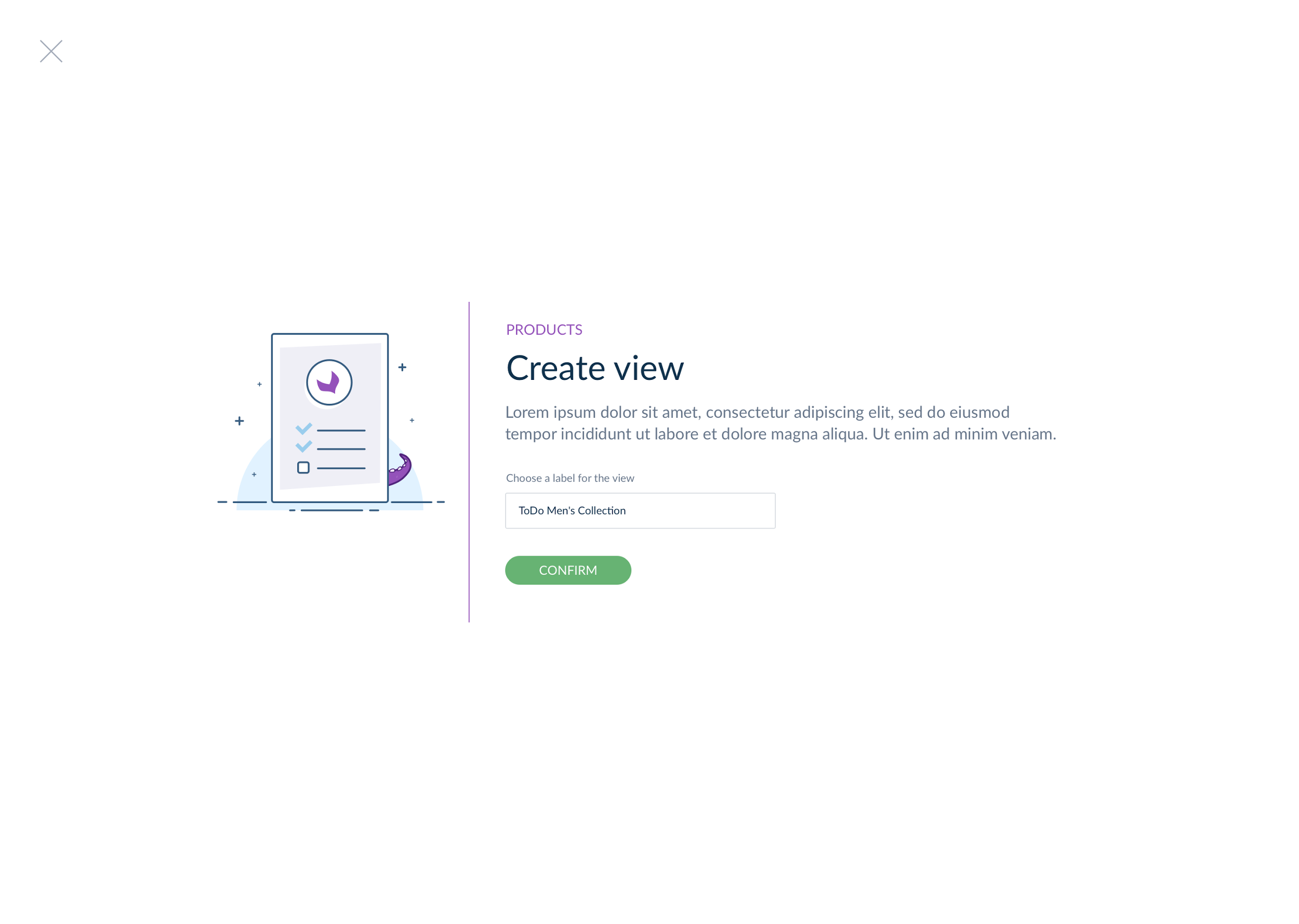At Akeneo, we believe in onboarding our end-users using a pragmatic approach. As we mentioned in part #1 of our UX design blog series, our design phil...

Table of Contents
Keywords
At Akeneo, we believe in onboarding our end-users using a pragmatic approach. As we mentioned in part #1 of our UX design blog series, our design philosophy boils down to a commitment to creating a simple, intuitive and friendly interface that enables users to go about their daily tasks in a more productive way.
We need to accommodate a range of diverse personas from 20 to 65 years old, including the day-to-day user, managers who want to report, and IT and admin staff that need to customize and maintain the software.

<<< Stéphane Giraud, Lead UX Designer prototyping >>>
We design the UX with the mindset that it will be used by many different people across a wide range of roles and responsibilities. We are committed to avoiding a design that looks fancy but is hard to use. Instead, we take our time to create a simple interface that is intuitive and efficient to use.
So how do we do this? Well…
Customers are struggling to match applications to the speed of their business demands. And one of their most significant challenges is becoming “stuck” within their day-to-day needs and not having the right technology to help ease this paralysis.
Because of this customer concern, we scaled our implementation strategy to regularly implement our customer feedback into real product changes and solutions, and the very first step was setting up a framework to support this feedback.
One example of this is how Akeneo approaches our release schedule. To date, Akeneo has had a remarkably stable release schedule. However, we have decided to change it to gain in reactivity and flexibility – and to continue to address our customer needs. Moving forward, we will issue a major launch every September with minor releases in December, March, and June.
From a UX Design Perspective, we’ve found that product feedback surveys where respondents choose from a pick-list of limited options do not deliver an accurate understanding of what our customers need. The extent of PIM user needs can’t be reduced to yes/no or rating questions from 1-10. Instead, when we focus on the business challenge that our customers are trying to solve, we can create a better solution that aligns to overall goals. We then reconcile this input. And this is simply what we did to build the new UX in 2.0. Our customers told us that wanted a more simple and intuitive user experience – and that is what we delivered.
For example, our customers were consistently asking for a decent Project Management Tool feature. It was an acute need for many clients. The knee-jerk reaction was to quickly implement a classic Project Management Tool on top of Akeneo PIM. There are many solutions available on the market, and the implementation would have been swift and easy. But it struck a chord with us! Why should we ask our end users to be stuck in project management when they should be focused on their core business: the process of Product Enrichment. Thus we entered a design cycle, and the Teamwork Assistant was born.

<<< new Dashboard reporting the Teamwork Assistant >>>
Our customers explained the challenge they wanted to solve… but it was still up to us to figure out how to interpret the problem and find a workflow solution that felt intuitive and efficient.
The first step of any UX design strategy is to build the right framework or process to facilitate the use of great feedback and resist the temptation in choosing the easiest solution.
We maintain a list of all the ideas generated by our end users. Every idea is recorded, whether it was produced in a feedback interview, or shadowing session, by a salesperson talking to a potential buyer, or from the help desk personnel talking to an active user.
Each product owner tracks the implementation status of new ideas. We also monitor where the ideas come from so product owners can go back to the user to investigate and flesh out the suggestion or conduct an additional study to assess similar needs with other users.
When the same idea is requested by multiple sources, we track that too. If a lot of users have the same suggestion, and it is proved there is a business value, it then becomes prioritized and moved into the product roadmap. If an idea is not PIM centric, it isn’t ignored, but instead, it is submitted to the marketplace team to be built outside of the core product as an integration or extension.
23% of all ideas shared since the beginning of Akeneo PIM has been implemented. We don’t collect customer feedback just to make our customers feel like we are listening to them; we actively implement their ideas into new product features.
Each product owner conducts two to three interviews every month with current clients regarding specific features, and the team leads one face to face visit each month. In the past, we have conducted feedback interviews on topics like dashboards, modeling complex products, media management, etc. The only requirement for end users to participate in the interview process is that they have been using Akeneo PIM long enough to understand the primary functionality. These interviews stir up new ideas, establish a cycle and multiply the value of the direct connection with our clients or markets.
Each product owner conducts 2-3 client interviews per month challenging a specific value proposition.
Interviews are great, but sometimes users don’t even know what changes they need to make operations run more smoothly. Every organization wants to optimize for productivity/collaboration, but users may not precisely know what features or additional functionality they need to make it happen. This is why we host “shadowing” workshops.
For example, workshops enabled us to detect that setting up one view required a user to complete 3-4 tasks. In the new release 2.0, 3-4 tasks are still needed but now are grouped into one unique location instead of being distributed across multiple locations. Testers reported a better performance score compared to the previous feature.

<<< New step by step workflow to set up a view >>>
We work with our clients to observe how end users interact with Akeneo PIM and take note of how users navigate the system, which tasks most impact productivity and to detect where time is wasted. Because of this, we can understand where UX improvements need to be made, and whether or not the users realize the impact that specific optimizations could have on their workflow.
Up next is Part 3 in the UX Design series. After conducting a dedicated roundtable with many stakeholders, learn about how we implement customer feedback into real product changes.
Ready to test-drive Akeneo PIM, or interested in a free consultation? Contact us today!
Interested in learning more about UX Design? Read our complete blog series:
<<< Inside Akeneo: UX Design Part #1 – The Philosophy
Inside Akeneo: UX Design Part #3 – The Build (stay tuned) >>>